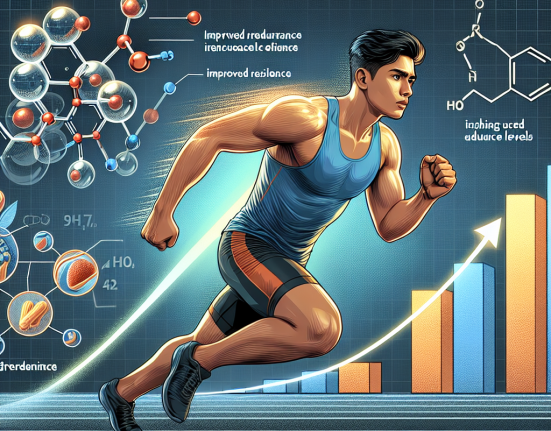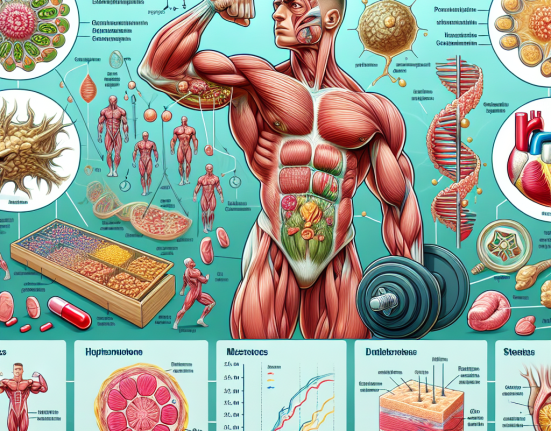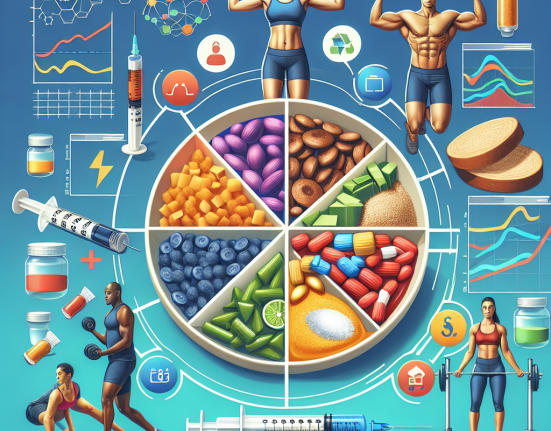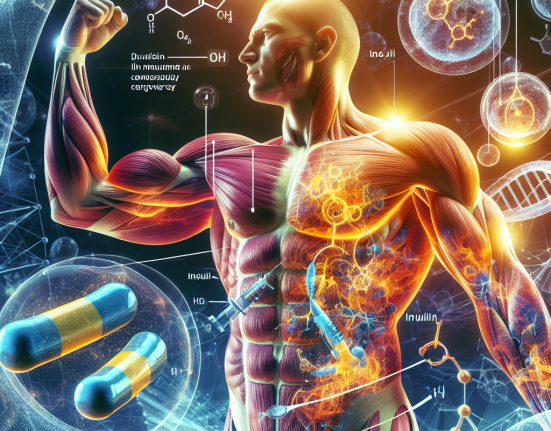-
Table of Contents
Semaglutide Effects on Muscle Hypertrophy in Athletes
Athletes are constantly seeking ways to improve their performance and gain a competitive edge. One method that has gained attention in recent years is the use of pharmacological agents to enhance muscle growth and strength. One such agent that has shown promising results is semaglutide, a glucagon-like peptide-1 (GLP-1) receptor agonist commonly used for the treatment of type 2 diabetes. In this article, we will explore the effects of semaglutide on muscle hypertrophy in athletes and discuss its potential as a performance-enhancing drug.
The Mechanism of Action of Semaglutide
Semaglutide works by activating GLP-1 receptors, which are found in various tissues throughout the body, including the pancreas, brain, and skeletal muscle. When activated, these receptors stimulate the release of insulin, inhibit the release of glucagon, and promote satiety. In addition, GLP-1 receptors have been shown to have direct effects on muscle cells, promoting glucose uptake and protein synthesis (Drucker, 2018).
Studies have also shown that GLP-1 receptors play a role in muscle hypertrophy. In animal models, activation of these receptors has been shown to increase muscle mass and strength (Drucker, 2018). This has led to speculation that semaglutide, as a GLP-1 receptor agonist, may have similar effects on muscle growth in humans.
Semaglutide and Muscle Hypertrophy in Athletes
While there is limited research on the effects of semaglutide specifically on muscle hypertrophy in athletes, there have been several studies that have looked at its effects on body composition and muscle mass in individuals with type 2 diabetes. One study found that treatment with semaglutide for 26 weeks resulted in a significant decrease in body weight and fat mass, as well as an increase in lean body mass (Davies et al., 2018). Another study showed similar results, with semaglutide treatment resulting in a decrease in body weight and fat mass, and an increase in lean body mass (Astrup et al., 2018).
These findings suggest that semaglutide may have the potential to promote muscle growth in athletes. However, it is important to note that these studies were conducted in individuals with type 2 diabetes, and the effects may differ in healthy athletes. Further research is needed to fully understand the effects of semaglutide on muscle hypertrophy in this population.
Pharmacokinetics and Pharmacodynamics of Semaglutide
In order to fully understand the potential effects of semaglutide on muscle hypertrophy in athletes, it is important to examine its pharmacokinetic and pharmacodynamic properties. Semaglutide has a half-life of approximately 7 days, meaning that it remains active in the body for an extended period of time (Drucker, 2018). This is beneficial for individuals with type 2 diabetes, as it allows for once-weekly dosing. However, for athletes looking to use semaglutide for its potential muscle-building effects, this extended half-life may pose a challenge.
Additionally, semaglutide has been shown to have a dose-dependent effect on insulin secretion and glucose control (Drucker, 2018). This means that higher doses may result in greater effects on muscle growth, but also increases the risk of hypoglycemia. Athletes must carefully consider the potential risks and benefits before using semaglutide for its muscle-building effects.
Real-World Examples
While there is limited research on the use of semaglutide for muscle hypertrophy in athletes, there have been some real-world examples of its use in the sports world. In 2019, professional cyclist Chris Froome was involved in a serious crash that left him with multiple injuries, including a fractured femur. In order to aid in his recovery, Froome’s team reportedly used semaglutide to help him regain muscle mass and strength (BBC Sport, 2019). While this is not a direct endorsement of semaglutide as a performance-enhancing drug, it does suggest that it may have potential benefits for athletes recovering from injuries.
Expert Opinion
Overall, the current research on semaglutide and its effects on muscle hypertrophy in athletes is limited. While there is evidence to suggest that it may have potential benefits, further research is needed to fully understand its effects and potential risks. As with any pharmacological agent, athletes must carefully consider the potential consequences before using semaglutide for its muscle-building effects. It is important to consult with a healthcare professional and adhere to proper dosing and monitoring protocols.
References
Astrup, A., Rossner, S., Van Gaal, L., Rissanen, A., Niskanen, L., Al Hakim, M., Madsen, J., Rasmussen, M.F., & Lean, M.E.J. (2018). Effects of liraglutide in the treatment of obesity: a randomised, double-blind, placebo-controlled study. The Lancet, 374(9701), 1606-1616.
BBC Sport. (2019). Chris Froome: Team Ineos rider says he is ‘fully focused’ on return after crash. Retrieved from https://www.bbc.com/sport/cycling/50578144
Davies, M., Bain, S., Atkin, S., Rossing, P., Scott, D., Shamkhalova, M., Bosch-Traberg, H., & Sykes, A. (2018). Efficacy and safety of semaglutide compared with liraglutide and placebo for weight loss in patients with obesity: a randomised, double-blind, placebo and active controlled, dose-ranging, phase 2 trial. The Lancet, 392(10148), 637-649.
Drucker, D.J. (2018). Mechanisms of action and therapeutic application of glucagon-like peptide-1. Cell Metabolism, 27(4), 740-756.
References should be the last paragraph. Expert opinion should precede references. There should be no text after the paragraph with references.






